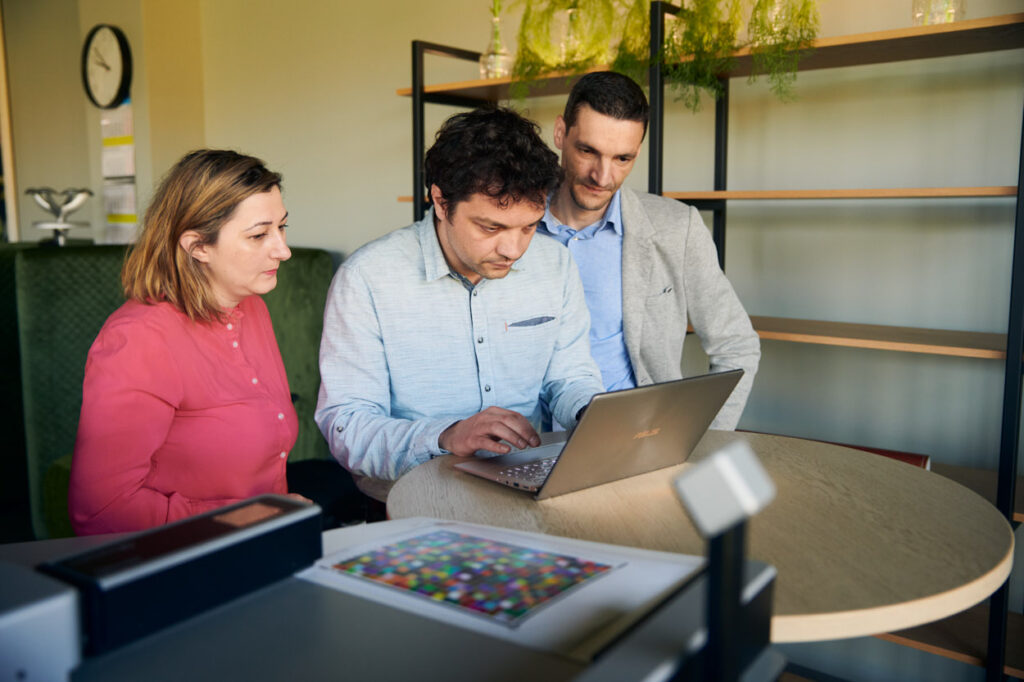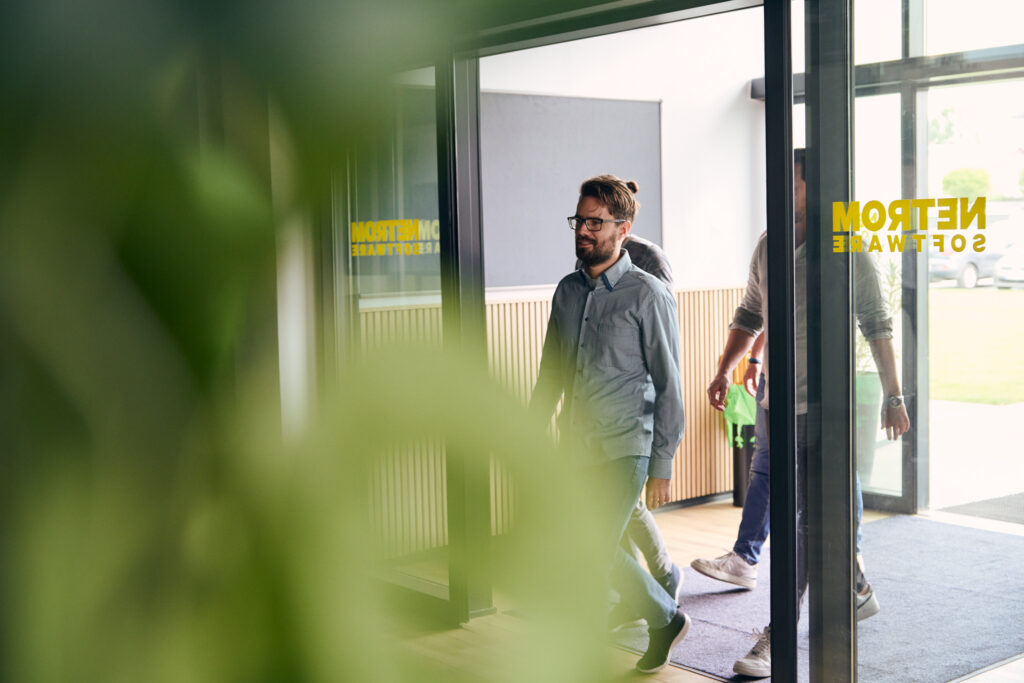
If your daily business operations rely on outdated IT systems, it can be difficult to meet the high demands of today. Modernization becomes necessary, but in practice, there is sometimes hesitation to tackle these systems. It’s a comprehensive process that takes time and money. Additionally, change management is involved, and there is a fear of (temporary) downtime during the modernization process. So how can you best modernize your legacy systems?
Legacy systems that need modernization hide many dangers that may not be visible at first, but will eventually cause significant problems within the organization. A legacy environment often runs on-premise on outdated hardware that is no longer reliable or fast enough, leading to performance issues. Connecting with modern (SaaS) systems is difficult or impossible to implement, and security is often lacking as well. Documentation for these systems is typically absent, and the knowledge is only stored in the minds of IT staff. When these valuable employees leave for another employer or retire, it creates a serious problem for the organization. Of course, you can seek external specialists, but you’ll quickly realize that certain knowledge is scarce and comes at a high price.
All of these are reasons to say goodbye to your outdated environment and choose a solution that meets the current requirements for reliability, speed, scalability, and security. By following the steps in the plan below, you can easily modernize and migrate an existing legacy environment to a modern platform.
1. Analyze the existing legacy environment
The first step in the process is to analyze the existing legacy environment. This largely involves answering a few key questions: What architecture is in place? Which other systems and processes are connected? What has been documented, and which individuals within the organization have in-depth knowledge of the current systems and software? Organizations that don’t have the time to figure this out can opt for a third-party audit. NetRom offers an extensive audit that provides detailed insight into the current state of your existing IT infrastructure. This information provides an excellent foundation on which to build your organization..
2. Define objectives and requirements
When modernizing a legacy environment, it’s not just about renewing existing functionality. It’s also a moment to explore whether the functionality needs to be expanded. At this stage, it’s important to sit down with all stakeholders to determine if and where there is a need for additional functionality. Additionally, the new environment must meet requirements in terms of reliability, scalability, and security. Many legacy systems are not always accessible via mobile devices such as smartphones or tablets. Given the need for continuous 24/7 system accessibility, it is desirable to enable this. If the legacy platform processes personal data, the organization must also consider the legal requirements related to GDPR.

3. Define tech stack and development method
Once you have a clear picture of your objectives and preconditions, you can start thinking about the necessary technology stack and development method. The tech stack consists of a collection of technologies, such as operating systems, databases, frameworks, servers and programming languages, which are used to build and run an application. When it comes to the development method, you can choose between rearchitect, rebuild, or replace.
- In rearchitect, the existing software is partially reused, but also improved and extended with new, advanced components. The core of the application, including data and business logic, remains mostly intact but can be migrated to modern infrastructure such as cloud platforms. New functionalities are integrated into the existing core.
- Rebuild involves fully redesigning and rewriting the application, while largely maintaining the original scope and specifications. The goal is to reconstruct the application using modern technologies, while preserving similar functionality. This results in a refreshed version of the software that better aligns with current technological standards.
- In replace, the application or essential parts of it are completely replaced with ready-made software solutions. This process offers the opportunity to integrate new functionalities. If you choose this approach, your organization will need to adapt its business processes to the new software solution.
4. Choose the right cloud platform
If you decide to transform an existing legacy environment into a SaaS solution, you will need to host it on a specific type of cloud platform. You can choose between a private, public, or hybrid cloud. When processing personal data, it is wise to store this data with a cloud provider with a data center on Dutch territory, so that your company operates in compliance with the GDPR. The cloud provider must then adhere to strict Dutch and European privacy legislation.
When designing a new IT infrastructure, we must also look to the future. The solution must offer sufficient possibilities for scaling and adding functionalities. Therefore, choose a proven cloud technology that is constantly being developed.
5. Create a migration plan
Once the solution has been chosen, it is essential to create a migration plan. What resources and expertise are needed to implement everything within an acceptable timeframe? If the purchase of new hardware is necessary, you must also take delivery times into account, as they can sometimes be long. When making a plan of action, it is advisable to make a realistic and flexible schedule so that unforeseeable circumstances and unexpected setbacks do not disrupt the intended delivery date. This ensures that the migration from your legacy environment to the new environment goes smoothly.
6. Setting up the new environment
When setting up a new environment, it is important that all business processes continue to function. You can choose to develop the new environment separately from the old environment. That way, the existing and new environments cannot interfere with each other. Of course you can opt for a hybrid approach, but then you have to be sure that no disruptions or conflicts will occur when executing processes. The progress of processes must be guaranteed under all circumstances.
For certain specialties, expert IT personnel can be scarce, and this needs to be taken into account. You may not have the right expertise in-house, and it may be necessary to rely on a skilled IT service provider for support. NetRom can fully assist and relieve organizations in modernizing and migrating legacy systems to a new environment.

7. Testing the new environment
To ensure a successful go-live, it is essential to thoroughly and extensively test the new environment. Test all possible scenarios and also stress-test the platform under heavy conditions. Does everything continue to function? Of course, all integrations with other systems must also be tested. Can data be exchanged between the new environment and other systems? Additionally, the cybersecurity of the new environment should be evaluated. Is it resilient to cyberattacks and hacks? Specialists can perform penetration tests to identify security vulnerabilities. Quality assurance and testing are critical aspects of ensuring a smooth go-live for the new environment.
It may also be useful to let your users work with the new environment in a test environment. They probably won’t be aware of all the possibilities yet, but they can already work with it and they may discover bugs and gaps. This gives your company the opportunity to solve these before going live.
8. Training staff
Your organization’s staff is used to working with the legacy environment, often for many years, and some resistance can be expected when they have to learn to work with a new environment. Therefore, it is recommended to organize training sessions for staff before the go-live. This way, they can become familiar with the new interfaces, making the acceptance process much smoother.
A new environment also means the implementation of a new tech stack. Your IT staff must be aware of all the technical details. Therefore, it is also advisable to train these employees so they can provide optimal support and easily resolve any issues that may arise.
9. Go-live of new environment
Going live is the moment when the new environment is put into use and the legacy environment is shut down. This can only take place after extensive testing has shown that the new environment functions reliably. In some cases, it may be useful to keep the legacy environment fully accessible for emergencies. Should a malfunction occur during the transition to the new environment, you can always fall back on the legacy environment and the progress of business processes is guaranteed.
You can also opt for a phased transition. In that case, you do not convert all legacy applications to the new system at once, but carry out the process in phases. It is wise to choose an approach in which you start with the least critical business applications. This minimizes the risk of failure and downtime. You can use the knowledge and experience gained in the first phase to smoothly and flawlessly migrate the more business-critical legacy applications to the new environment at a later stage.
10. Evaluation and implementing improvements
After going live, several people within the organization will be working with the new environment. In practice, it appears that bugs can always be discovered or malfunctions can occur. Make sure that there are enough suitable IT personnel available to solve these problems quickly. If you work with an external software development partner such as NetRom, this post-live support is usually already included as standard in the service.
An infrastructure, platform or architecture that works flawlessly ensures that your staff accepts the new environment. It is also useful to have the staff evaluate the new environment after some time. How do they experience the new environment? Does everything work better compared to the legacy environment? Do processes run more smoothly and can they perform their work faster? Input from users is extremely useful. They often come up with ideas for improving the new system. In the end, this always results in better systems and applications, which in turn leads to more efficient processes, which have a positive effect on a company’s profitability.
Need help modernizing your legacy systems?
The above 10 steps will provide you with a solid guide for modernizing your legacy environment. However, if you don’t have all the knowledge, people, and experience in-house to achieve this within a realistic and acceptable timeline,
NetRom Software has over 25 years of experience in modernizing legacy software. The highly skilled IT specialists at NetRom Software stand out due to their high level of expertise combined with in-depth domain knowledge across various sectors.
Are you curious about what NetRom Software can do for your company in the area of legacy modernization and migration? Then contact us via the contact form or view our customer cases here to discover how our customers have experienced their legacy modernization with NetRom.